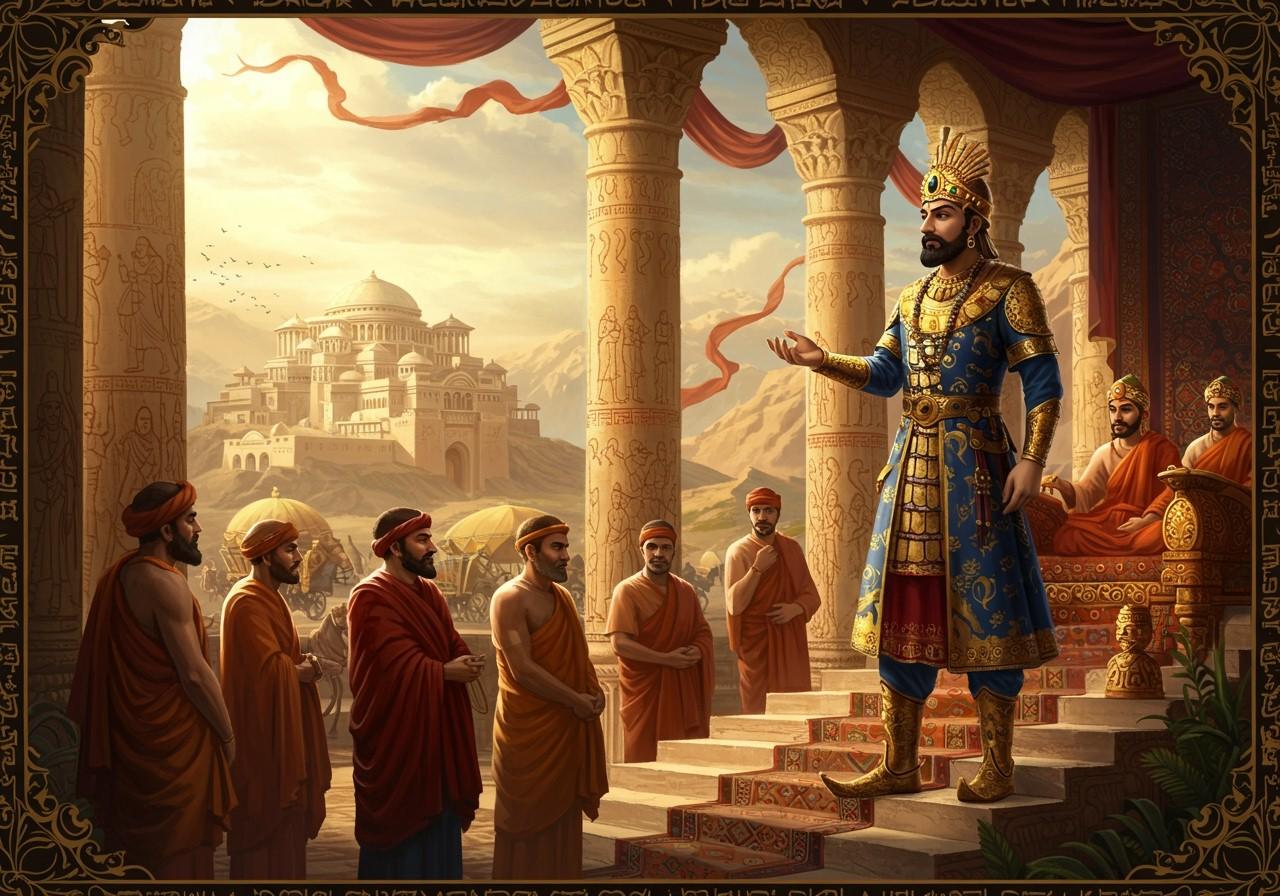
Kanishka I, also known as Kanishka the Great, a prominent figure in ancient Indian history, reigned over the Kushan Empire from approximately 127 to 150 CE. This article delves into the life, reign, and enduring legacy of Kanishka, exploring his significant contributions to culture, religion, and politics. Understanding his impact allows us to appreciate India’s rich historical tapestry and the pivotal role of the Kushan Dynasty in shaping the subcontinent.
Who Was Kanishka the Great?
Kanishka the Great, an emperor of the Kushan Dynasty (circa 127-150 CE), is renowned for his military achievements, administrative prowess, and patronage of Buddhism. His reign marked the zenith of the Kushan Empire, extending its reach from Central Asia and Gandhara to Pataliputra. Kanishka’s administration operated from two capitals: Purushapura (now Peshawar) and Mathura. He is celebrated for his military campaigns, political acumen, and spiritual influence.
The Military Leader
Kanishka’s military campaigns were instrumental in expanding the empire’s borders, particularly focusing on securing dominance over the Silk Road. This strategic move established the Kushan Empire as a vital link between the East and West, facilitating both trade and cultural exchange. His empire maintained diplomatic relations with powerful entities like the Roman Empire, Sasanian Persia, the Aksumite Empire, and the Han dynasty of China.
Administrative Skills
Operating from dual capitals, Purushapura and Mathura, Kanishka effectively governed the vast Kushan Empire. His policies fostered economic growth, evidenced by the standardized coinage system he introduced. Inscriptions and coins from his era offer valuable insights into his administration and the policies he implemented.
Spiritual Contributions
Kanishka’s spiritual contributions constitute a significant part of his lasting legacy. A patron of Buddhism, he played a crucial role in its spread beyond India’s borders. He convened the Fourth Buddhist Council in Kashmir, a pivotal event for the development of Mahayana Buddhism. His reign also witnessed the construction of monumental stupas, such as the Kanishka Stupa in Peshawar.
The Kushan Dynasty
The Kushan Dynasty, a vibrant blend of Greek, Persian, and Indian cultures, originated in Bactria. Under the leadership of emperors like Kanishka, the empire expanded significantly. The dynasty is recognized for its cultural integration, artistic achievements (especially the Gandhara style), and religious tolerance, encompassing Buddhism, Hinduism, and Zoroastrianism.
Cultural Integration
The Kushans were renowned for their policy of religious tolerance, extending patronage to various faiths, including Buddhism, Hinduism, and Zoroastrianism. This cultural pluralism fostered a diverse and inclusive society within the empire, enriching its cultural landscape.
Economic Growth
Strategically positioned along the Silk Road, the Kushan Empire became a central hub for trade, leading to economic prosperity and fostering cultural exchange between diverse civilizations. Administrative practices, such as the standardized coinage system, contributed to economic stability and growth.
Kanishka’s Rule and Achievements
Kanishka’s reign was marked by several significant achievements:
- Military Campaigns: Expanded the Kushan Empire to its greatest extent, solidifying its position as a major power.
- Administrative Reforms: Established a centralized government and implemented policies that promoted trade and agriculture, contributing to economic stability.
- Buddhism Patronage: Supported the Fourth Buddhist Council and commissioned the construction of stupas and monasteries, furthering the spread of Buddhism.
- Religious Tolerance: Issued coinage featuring diverse religious symbols, reflecting the empire’s policy of religious inclusivity.
- Gandhara Art: Patronized art and architecture, particularly the Gandhara style, which had a lasting impact on Buddhist iconography.
- Silk Road: Facilitated cultural and economic exchanges along the Silk Road, connecting the East and West.
Religious and Cultural Contributions
Kanishka’s contributions to the spread of Buddhism beyond India are noteworthy. He convened the Fourth Buddhist Council in Kashmir to compile and preserve Buddhist texts and doctrines, a key event in the development of Mahayana Buddhism.
Monumental Constructions
His reign saw the construction of monumental stupas, such as the Kanishka Stupa in Peshawar, which became important pilgrimage sites for Buddhists.
Gandhara Art
The flourishing of Gandhara art, a blend of Hellenistic, Persian, and Indian traditions, during Kanishka’s reign left a lasting impact on Buddhist iconography.
How Poojn.in Helps You Honor the Buddhist-Hindu Heritage of Kanishka’s Era
At Poojn.in, we offer authentic puja items that connect you to the rich Buddhist-Hindu traditions prevalent during Kanishka the Great’s time. Our carefully curated collection includes:
- Buddha Statues and Idols: High-quality brass and copper Buddha statues that reflect the Gandhara art style prominent during Kanishka’s reign.
- Traditional Incense and Dhoop: Pure incense sticks and dhoop crafted from natural ingredients, reminiscent of those used in ancient Buddhist monasteries.
- Meditation Accessories: Meditation mats, cushions, and bells to enhance your spiritual practice.
Conclusion
Kanishka the Great’s reign stands as a period of remarkable achievements and cultural integration. His military prowess expanded the Kushan Empire, establishing it as a vital link between East and West. His administrative reforms and strategic governance fostered economic stability and growth. Kanishka’s patronage of Buddhism, marked by the construction of stupas and monasteries, left an enduring religious and cultural legacy. His support for religious pluralism fostered a diverse and inclusive society.
Under Kanishka, the Kushan Dynasty became a melting pot of cultures, blending Greek, Persian, and Indian influences, as reflected in the flourishing Gandhara art. Understanding Kanishka’s life and contributions provides valuable insights into India’s rich heritage. His multifaceted legacy continues to be celebrated, reminding us of the importance of cultural integration and religious tolerance.
Ganesh Chaturthi Rangoli Designs
Krishna’s Life Exploration
Kanaka Durga Temple Guide


